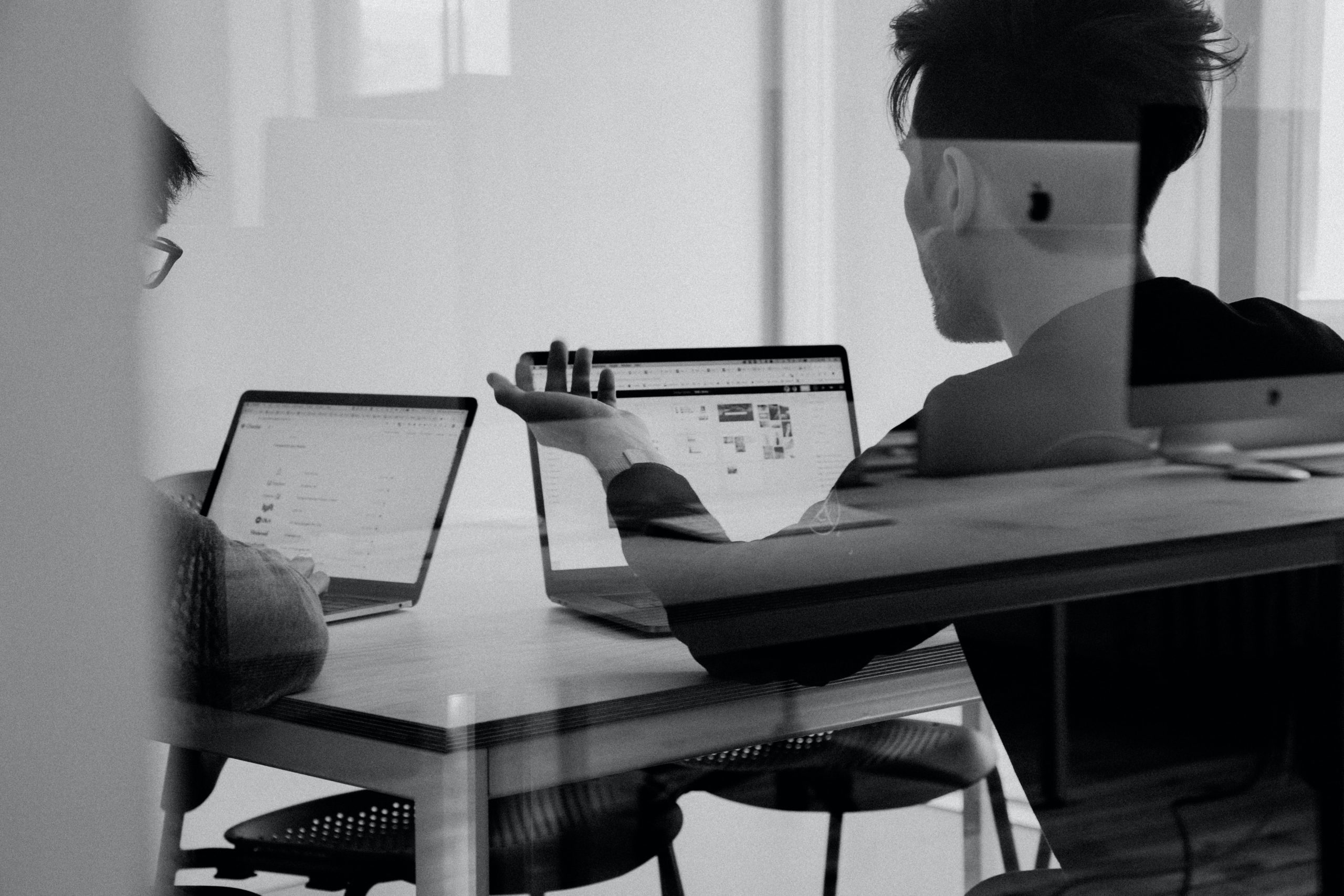After two long years of pandemic pain, most people hoped for a return to normality for 2022. With some signs that the worst may soon be over, businesses are shifting their thinking to expansion.
But the “new normal” is nothing like the pre-pandemic 9-5 in the office. For workers, the benefits of remote working and the flexibility it offers are evident. For employees, the downside of less staff in-house is offset by reduced travel costs, happier staff and more productivity. In short: hybrid working is the way we will work for the remainder of the 2020s.
Here are some key trends to take note of this year:
1. Hybrid work is the new normal
If we learnt anything from the past two years, is that any plea to “return to business as usual†normally results in renewed restrictions within weeks. It has become the jinx of today’s politicians that almost as soon as measures designed to stimulate a return to the office are announced, they are nixed by a new variant, quarantine breach or public health order.
Different countries are moving at different speeds with different results. But one thing is clear, despite efforts to get people back to central business districts, the corporate office you once knew is gone. Collaboration software giant Atlassian has vowed never to return to in-office working. Its Team Anywhere policy envisages as few as four in-person meetings per year. The company has been able to expand its team by some 50% over the course of 2021, by being free from the physical constraints of employee office space.
Few companies will go as far as Atlasssian and go to 100% distributed teams. Instead, the buzzword for most businesses in 2022 is “hybrid”. Hybrid working is when organisations or teams allow individuals to work partially remote and partially in the office. Companies such as Microsoft are gearing up for a hybrid future, with a range of tools available for a limited time in the office combined with new digital productivity tools.
Typically, a mixed workforce consists of employees working remotely and those working in an office or central location. A hybrid work model is a flexible, location-based program that allows for a combination of on-site and off-site work at the discretion of the employee and at the discretion of the employer. As a result, many employers are seeing a model that combines office hours with remote work.
This model allows employees to work from home part-time and go to the office one to four days a week. And because people are able to work remotely using most hybrid work models, employees who are isolating for Covid can stay home entirely.
A hybrid work environment is also more inclusive for those with various caregiving and other responsibilities outside of work, for those who have more difficulty getting to work or with limited access to transportation, or for those who may have mental or physical health issues that make it difficult to work in the office or all the time.

2. The future could be a 15-hour work week
At the beginning of the Great Depression, in 1930, the economist John Maynard Keynes gave us hope. He predicted in his 1930 book Economic Possibilities for our Grandchildren, that in the future, the marvels of technology would free us from chores and usher in an era of leisure.
For the first time since his creation man will be faced with his real, his permanent problem how to use his freedom from pressing economic cares, how to occupy the leisure, which science and compound interest will have won for him, to live wisely and agreeably and well.
More recently, as rising wages are the result of a lack of labour mobility caused in part by closed borders, we are seeing proponents of the universal basic income now also pushing the 15-hour work week concept. The idea is that freed from the commute and armed with time-saving technology, workers’ productivity increases to the point that a standard work week can be compressed into fewer hours.
While this sounds utopian, the shift will be gradual. Businesses will continue to give employees the flexibility to work remotely part of the time. So while some companies may still require everyone (both remote and in-office) to work from 09:00 to 17:00 depending on the timezone of a given office, others allow employees to fully choose their working hours. Meanwhile, some companies may set specific hours for office work and allow remote work to be flexible or require employees to be available for appointments at certain times of the day, but if not, leave them to choose “hours.”
For many employers, this will result in a three-day in-person work week, combined with days working from home. Once businesses see the productivity gains, there could be less pressure on employees to clock in and out. Studies show that employees working exclusively from home also reported high levels of productivity, with 66% reporting being productive or very productive. They are more satisfied with their jobs and report better health and mental health at work since the start of the pandemic than employees who work exclusively from home or the workplace.
In time, enlightened employers will be those who direct work in objective milestones, rather than time. As evidence from Europe suggests, restricting weekly hours through legislation actually increases productivity. European workers tend to take all of their allocated annual leave days (often up to 30 per year) and relax and recharge, whereas 73% of US worker’s 15 annual leave days are used, leaving workers more mentally frazzled, according to Bruce Sacerdote, a professor of economics at Dartmouth College who has studied workplace trends in the U.S. and in European countries.
In France, the idea of a 32-hour working week (or four days) is now on the table for discussion. Maybe the 15-hour workweek doesn’t sound so crazy.

3. Downtown will become like a ghost town
Since some companies can scale office space where multiple people work remotely, a hybrid work model seems like a good option for these companies. As many companies return to office work, they will deploy working with a hybrid model to some extent. Instead of returning employees to the office full-time, many companies are expected to move to a hybrid work model in the coming months, with employees dividing their time between home and office.
Some employers are downsizing their offices or even closing their offices in anticipation of a long-term transition to hybrid and home-based work. Businesses may be concerned about changing and moving from the workplace to hybrid or fully remote work. A recent study by Reed also showed how companies are currently coping with the new work norms and the spread of hybrid work, showing that 45% of employees who are not working hybrid will consider quitting their job to do so. A recent survey by Wakefield Research shows that nearly half of employees (47%) would likely be looking for a job if their employer didn’t offer flexible employment opportunities.
People like working from home. Over half of those surveyed said they like being at home part of the week. This is why even in places where the threat from covid-19 is low, offices are only a third full.
What this means for commercial landlords is not all that positive. Governments have added rent relief to the suite of pandemic support packages. Foot traffic at most CBD retail spaces is down to around 25% of 2019 levels. This, in turn makes returning to work, with fewer food options and a less buzzy vibe, less appealing for employees. Employers may need to add fitness and dining perks to salaries to encourage or incentivise workers back to the office.

4. Automation will speed up human tasks
With more workers at home for more time, lots of mundane face-to-face tasks will be replaced. Meetings, for example, often take longer than is needed, our to etiquette, giving everyone a turn to talk and convention. With data, lots of these interactions can be automated.
Automation and artificial intelligence (AI) will affect every level of the business and its people. For example, in the recruitment process, initial screening is already done by keyword analysis, résumé scanners and AI-led predictive modelling. Combine this with candidate videos and you can show a human side, not just the algorithm. But how it works is that only those applicants who make it through the AI sorting get requested a video application questionnaire.
According to a PricewaterhouseCoopers study, 73% of people think technology can never replace the human mind. This means that while technology will help humans shortlist and sort, humans will ultimately take more informed decisions.
As more people work from home, this makes more sense. Gone are the days of Post-It notes and whiteboards and because the digital alternatives are out there, they are not as tactile as the real-world examples, meaning the automation becomes more inviting an alternative.
Read how video résumés help streamline job application markets

5. Work will be even more video – just offline
So what will remote work look like in 2022? the answer is even more video. The Center for the Long View, Deloitte’s futurologist team, predicts a 500-fold increase in the use of video over the next decade.
If that sounds implausible then consider the rise of video conferencing, which went from novel to ubiquitous within a few months in 2020. If the 500% increase in video sounds scary, then you are probably not a millennial. Google predicts that 75% of all business communications will be video by 2030. The difference is that, unlike social media, where individuality and individuals are prized, video messaging for business requires teamwork and collaboration.
This is where business video messaging comes into play. Rather than lock everyone into a video conference call at the same time, asynchronous video messaging allows teams to upload video clips from their phone, which are then stitched together into meaningful video programmes that can be viewed at leisure.
Read how asynchronous video messaging can combat Zoom fatigue
In essence, it frees teams up from the tyranny of time. Typical uses for this is in large organisations is replacing weekly meetings where each participant speaks for one minute in a 60-minute call, with a 10-minute compilation of uploaded sales updates.
Imagine this blog post, for example, as a monologue delivered as a piece to camera. In that instance, video conference recording would work. But replacing the comments below would be trickier via Zoom. Video messaging makes it easy to gather reader vox pops in video form and categorise them quickly.

Final Thoughts: Political parties are turning to video messaging to collect voter sentiment surveys
Another quirk for 2022 is that we are seeing political parties use video messaging to collect voter sentiment surveys. The ease of gathering voter views in video form in every electorate is matched by the private nature of video messaging: unlike social media, no one sees the video messages until the organisation owning the library showed to publish. This is already proving to be a goldmine for the parties and candidates using our platform to gain insights.
Unable to get out and speak to grassroots supporters, why not get video messages from the grassroots never leaving your home office? With large gatherings still unlikely in the first half of the year, video compilations of supporters’ faces and views is the next best thing, it seems. Others advocacy organisations are also using video messaging to compile video petitions.
As we move gingerly towards a return to work, home working will clearly be a large part of the mix well into 2022. After the rise of video conferencing in 2020, I’m tipping 2022 will be the rise of asynchronous video messaging. Find out what could be barriers to hybrid work, whether some workers will need a full-time office, or whether employers can offer perks such as child care financial support to ease the transition. To build a hybrid model that’s right for your business, talk to your employees about their needs.
Although there are many work models available, the relevance of which depends on the nature of the work, we conclude that companies that can offer their employees hybrid work models combining work from home and work on-site create conditions for optimal work for their employees in the current conditions and for the foreseeable future.
To build video messaging into your hybrid working conditions, talk to us at Vloggi about switching from video conferencing today






